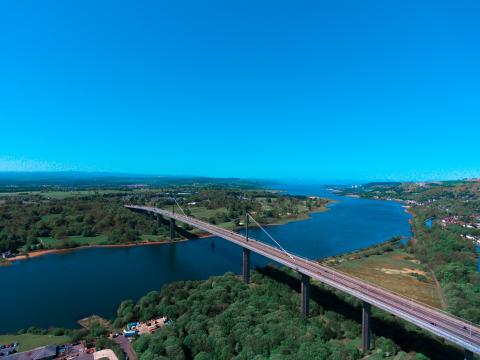Climate Exp0’s Adaptation and Resilience Day (20 May 2021) included a session on Enablers and barriers to the practice of adaptation – from mainstreaming to transformation. The session Chair, Kate Lonsdale (co-Champion, UK Climate Resilience Programme) and speakers Paul Watkiss (Paul Watkiss Associates, of UKCR project Climate Services Standards and Values), Kit England (Glasgow City Region, formerly of Climate Ready Clyde), Anna Scolobig (University of Geneva) and Enrico Ferrero (Universita del Piemonte Orientale) all contributed to the following summary.
There has been a growing tendency in the literature to talk about adaptation using the language of transformation – suggesting that ‘incremental’ changes in existing systems or ‘change at the margins’ will be too slow and fundamentally insufficient in scale and pace of change. We need something more radical. The Paris Agreement (2016) calls for a transformation of our social/economic systems to reduce Greenhouse Gas (GHG) emissions. The Global Commission on Adaptation (2019) calls for a transformation to close the climate adaptation gap. EU countries have committed to a transformation to halt the loss of biodiversity by 2020. The European Green Deal calls for a Just Transition.
The UK government has taken a mainstreaming approach to adaptation – integrating climate change into existing policies. This has many benefits – there is clear responsibility, expertise and mandate and it can be implemented in ways that are consistent with other priorities and opportunities for leveraging and scale. However, mainstreaming encourages incremental adaptation of the status quo, which is unlikely to be sufficient to meet the scale of change needed to respond to change required. In some cases, it may hinder or create barriers to progress. It will be extremely difficult to justify transformational adaptation through the current UK governance system that is not incentivising more and earlier incremental adaptation – let alone transformational adaptation.
Headline messages
Operationalising transformational adaptation is not simple. Transformational mitigation has relatively easy solutions (even if hard to implement) that can be driven by national policy. Transformational adaptation like other “messy” or “wicked” problems (obesity, ageing population) is harder to describe and responsibility cuts across sectors and scales. It is hard to get agreement on what the problem is, let alone the possible solutions. Moreover, unlike mitigation, adaptation is harder to measure. There are no quantitative targets (e.g. net-zero emissions) and priorities are not clearly established, especially in local policies.
The time is now for more radical and transformational adaptation. The 2020s will be transformational for mitigation anyway – driven by a strengthened role for the State at all levels. America and China are both mobilising for transformational mitigation, providing a window for a similarly transformational adaptation intervention, given the potential synergies. In the EU, there are great opportunities for integration with the RTD Mission on Adaptation to Climate Change and Societal Transformation, the EU Recovery and Resilience Facility and the Green New Deal movement. A raft of systems-focused and transformational policy are due as these initiatives and the European Climate Law take hold.
We do know something about how to do this. We know how to structure transformative visions and how to plan for it, but we also need institutional and human mindset transformations to make drive the necessary change, test new approaches, and ensure that it will be sustained longer term. Human and economic resources need to be invested, especially at the local level, if we want to achieve transformational adaptation.
Nature-based solutions projects are at the nexus of such transformations, providing insight into how local transformational change happens. They demonstrate the possible co-benefits with other policy drivers such as health, biodiversity, job creation, disaster risk reduction and critical enablers, including systemic and path-shifting visions supported by strong advocacy groups, solution co-design between experts and communities and polycentric collaboration enabling novel arrangements across sectors and scales. By offering ways for scaling up (in legislation and policy), down (at local level) and deep (to encourage behavioural change) nature-based solutions have the potential to catalyse a just transformation, which is something we must build on when developing policy to enhance adaptation and resilience to a changing climate.
Delivering permanent transformation will require a step-change in approach that is systems focused – addressing the structural changes required to avoid silo thinking; inclusive –community/locality led with inputs from the private sector; collaborative – delivered through dynamic, multi-scale formal mechanisms and partnerships and new actors – focused on collective outcomes; supported by new governance arrangements, and funded using public funds strategically and private sector finance, where relevant.
The Climate Ready Clyde initiative demonstrates that key thing is to get started and learn and course-correct as you go. Climate Ready Clyde started with a high ambition to achieve real transformation of the City Region’s economy, society and natural environment to flourish in a future climate within a decade. This requires hard choices now, to avoid harder ones in future.
Photo by Craig Bradford on Unsplash

